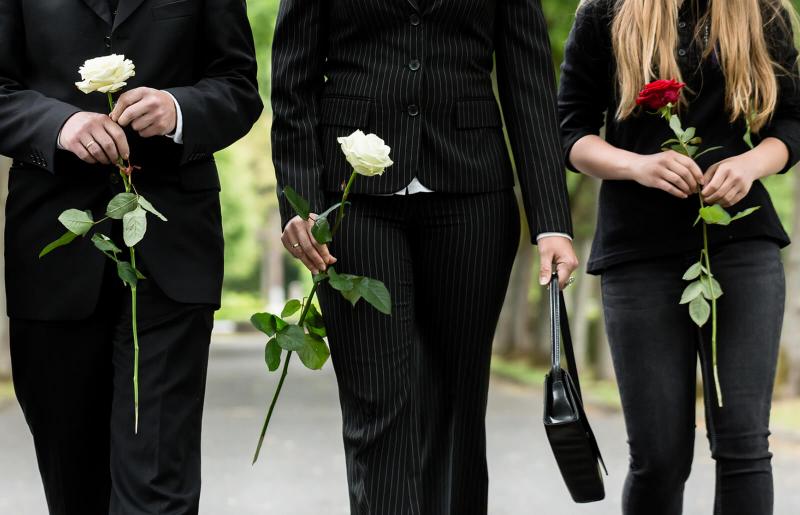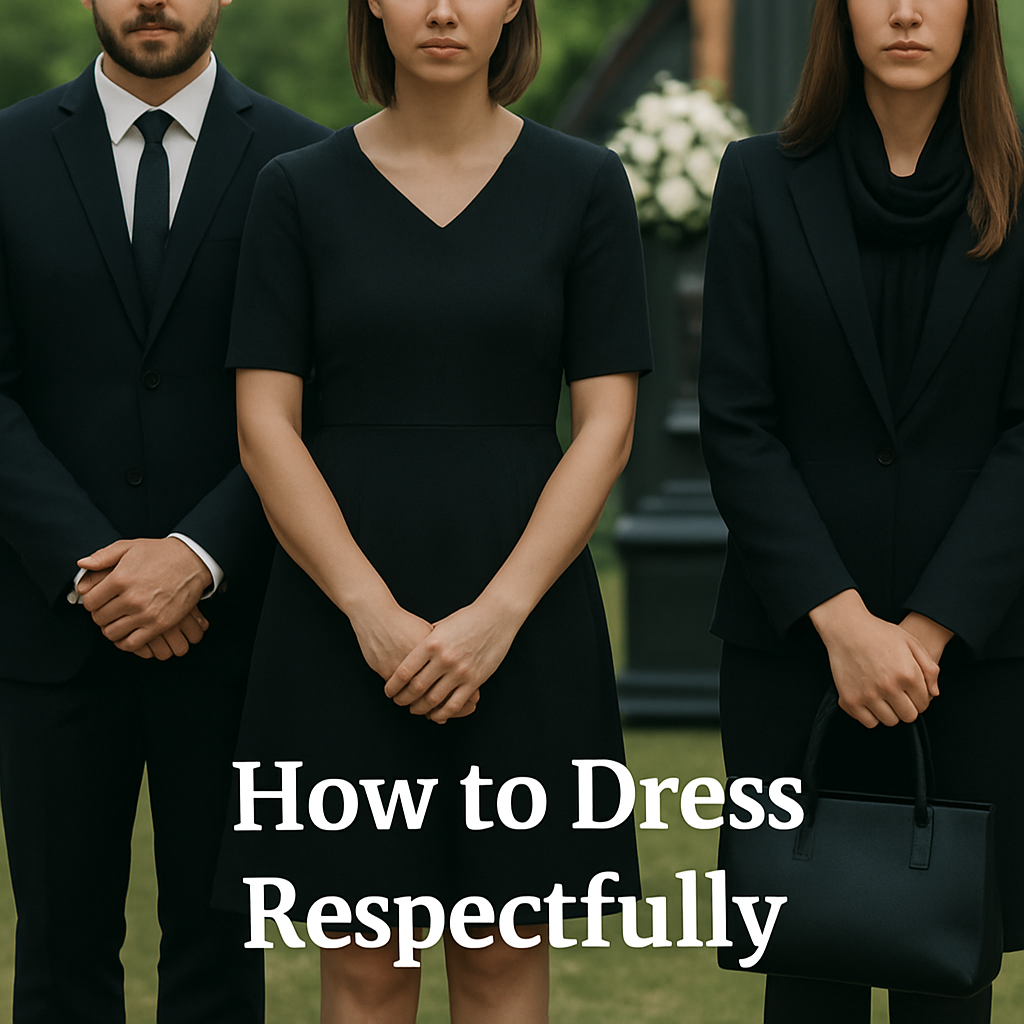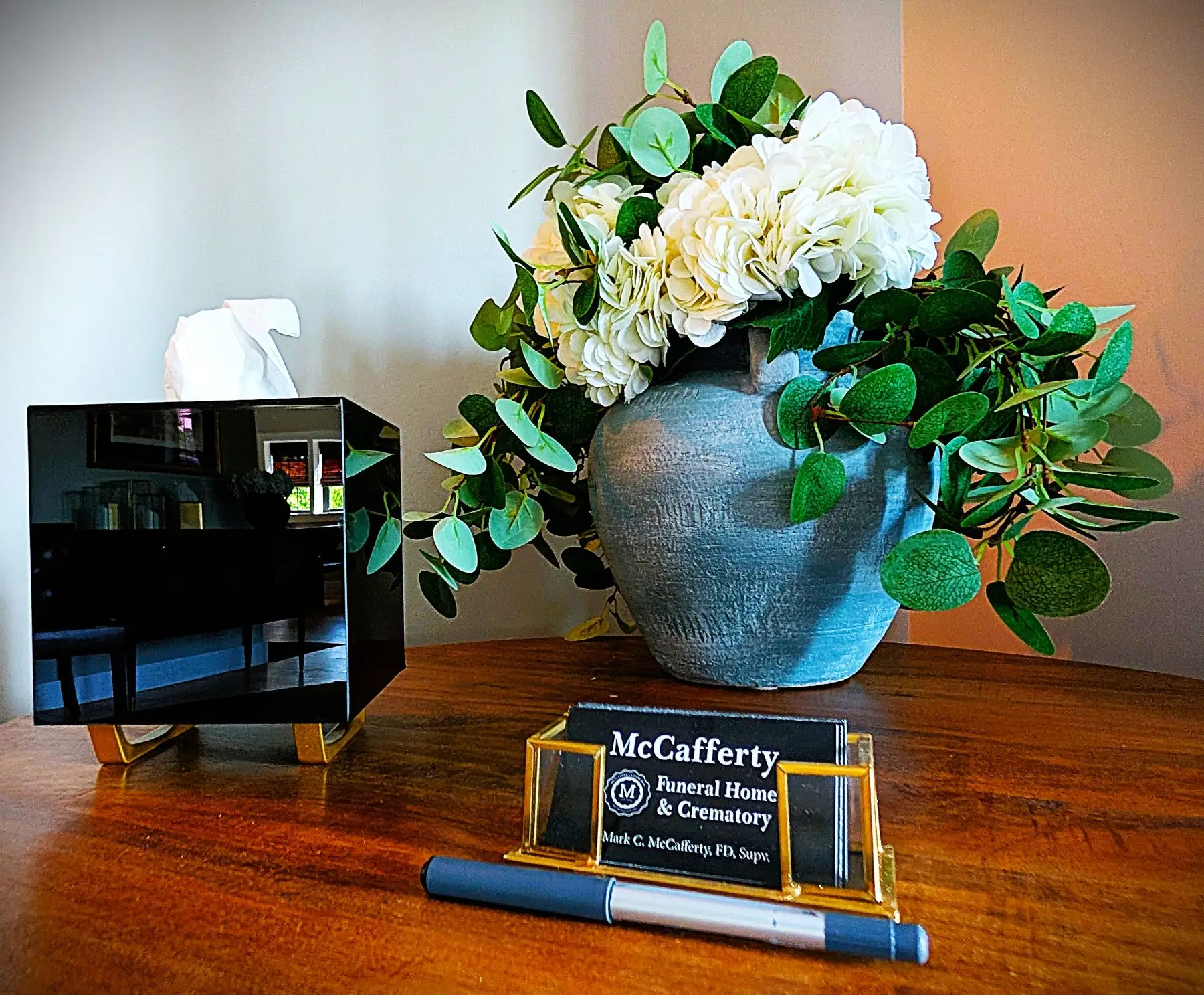
Funeral Etiquette
Attending a funeral is about showing respect to the departed and offering support to those left behind. Whether it’s your first time attending a service or you’re unsure of modern norms, understanding basic funeral etiquette can help you approach this emotional occasion with grace and confidence. From what to wear to what to say, this guide offers practical advice for honoring the moment appropriately.

Traditional funeral attire is conservative and somber. Choose dark, muted, or neutral colors like black, navy, charcoal gray, or dark brown. The goal is to show respect, not attract attention.
Some families request specific attire (e.g., white for Buddhist or Hindu services, colorful clothing for a celebration of life).
Always check the obituary or invitation for guidance. When in doubt, choose conservative black or gray.

Aim to arrive 10–15 minutes early. This allows time to settle and show support without disrupting the ceremony.
Silence or turn off your phone before entering.
If attending virtually, mute your mic and consider keeping your camera on as a sign of presence.
Sit quietly and follow the lead of others during standing moments (e.g., prayers, hymns).
The first few rows are typically reserved for close family and invited guests. If you’re unsure, choose a seat toward the back or middle.
Keep it simple and heartfelt.
“I’m so sorry for your loss.”
“They were a wonderful person.”
“You’re in my thoughts.”
Use the person’s name when appropriate—it personalizes your message.
Listen more than you speak. Sometimes your silent presence is the best comfort.
Avoid clichés or minimizing phrases:
“They’re in a better place.”
“Everything happens for a reason.”
“At least they lived a long life.”
Don’t rush someone’s grief or compare it to your own loss. Everyone processes differently.
Flowers are a traditional and thoughtful tribute.
Check the obituary or family’s wishes—some prefer a donation to a charity in lieu of flowers.
In some cultures (e.g., Japanese), giving money in a respectful envelope (kōden) is customary.
A gentle hug, handshake, or placing a hand on someone’s arm can offer support—if you sense they’re open to it.
At virtual services, be present and respectful. A short message in the chat or after the service is often appreciated.
It’s thoughtful to bring food, send a sympathy card, or offer specific help (e.g., grocery run, childcare).
Send a handwritten note even weeks after the funeral—grief lingers beyond the immediate aftermath.
Western funerals typically call for black clothing, with religious rituals varying.
Eastern customs may involve white garments, incense rituals, or communal meals.
Always research or ask someone familiar with the tradition if you’re uncertain.

No, but it’s the safest choice unless the family requests otherwise. Always prioritize modest, respectful clothing.
Yes—if the family has requested it. Celebrations of life or personalized services may invite color or custom attire.
Simple condolences work best: “I’m so sorry,” “You’re in my thoughts,” or “They will be missed.”
Yes—if you want to support the family, your presence is usually welcome. Sign the guestbook and be respectful.
Log in on time, stay muted, keep your camera on if possible, and use the chat for respectful messages only.
McCafferty Funeral & Cremation Inc. serves all neighborhoods in Philadelphia and its surrounding counties for funeral and cremation services.
We have 2 convenient locations in both Philadelphia and New Hope, PA.
* We also offer international shipping for those who have family in other parts of the world.
